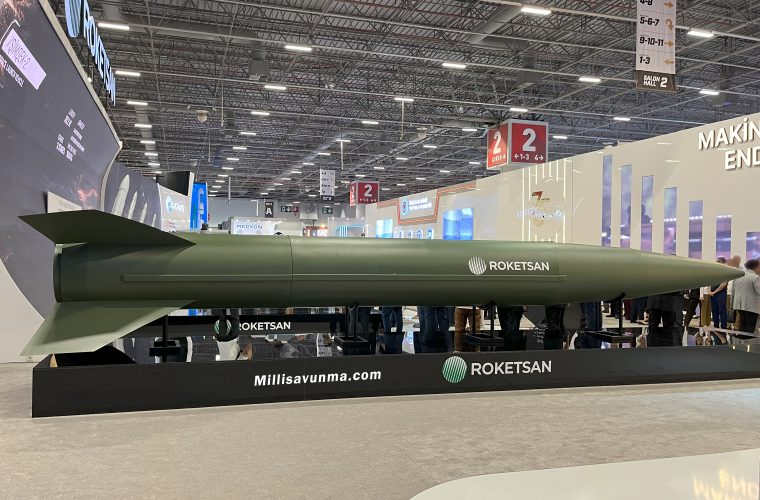Hypersonic missiles first began to take shape during the Cold War with the space and ballistic programs of the USSR and the United States. After Germany’s V-2 rockets, both superpowers in the 1950s sought solutions to atmospheric reentry and extreme speed challenges. By the 2000s, the need emerged for weapons capable of bypassing modern air defense systems, with maneuverability and speeds five times faster than the speed of sound. This process gave birth to hypersonic missiles—now among the world’s most strategic weapons.
Türkiye’s defense industry has made significant strides in recent years, but the unveiling of the Tayfun Block-4 hypersonic missile at IDEF 2025 marked one of the most powerful turning points in this story. Developed by Roketsan, the newest member of the Tayfun family stands out not only for its technical features but also for the strategic vision it represents.
At nearly 10 meters long and weighing 7 tons, the missile can reach speeds of Mach 5 and above, at least five times the speed of sound. This is more than just a number: it allows the missile to reach its target much faster and perform low-altitude maneuvers that significantly challenge existing air defense systems. Experts estimate its range could exceed 1,000 kilometers, making it one of Türkiye’s longest-range weapons.
To understand hypersonic technology, it’s important to compare it with today’s conventional missiles. Ballistic missiles can achieve very high speeds, but follow a predictable parabolic trajectory, making them detectable by advanced defense systems (Patriot, THAAD, S-400, etc.). Cruise missiles fly at low altitudes and evade radar, but their speeds remain relatively low. Hypersonic missiles combine the best of both worlds: ultra-fast and maneuverable, making them nearly impossible to intercept.
Currently, only three countries operate hypersonic technology at an operational level:
-
Russia: Avangard (HGV), Kinzhal (air-launched ballistic variant), and Zircon (naval missile) reach speeds between Mach 8–20.
-
China: DF-ZF and DF-17 provide deterrence in the Asia-Pacific; Starry Sky-2 is testing scramjet technology.
-
United States: ARRW and HAWC projects focus on hypersonic glide and scramjet systems, while C-HGB develops a common solution for land, sea, and air platforms.
-
India and France: Running experimental and test-phase projects.
-
North Korea: Claims to have conducted Mach 5+ hypersonic tests.
At this point, exaggeration isn’t necessary. The Tayfun Block-4 is neither the fastest nor the longest-range missile in the world. But the fact that a NATO ally has developed a hypersonic missile indigenously is significant in itself. With this system, Türkiye is not only reinforcing its regional security but also signaling its ambition to shape the doctrines of future warfare.
The unveiling of Tayfun Block-4 highlights an important truth in defense: sometimes it’s not just about the technical specifications of a weapon, but the strategic confidence and deterrence its existence represents. Türkiye’s entry into the hypersonic age should be read exactly in this light.



